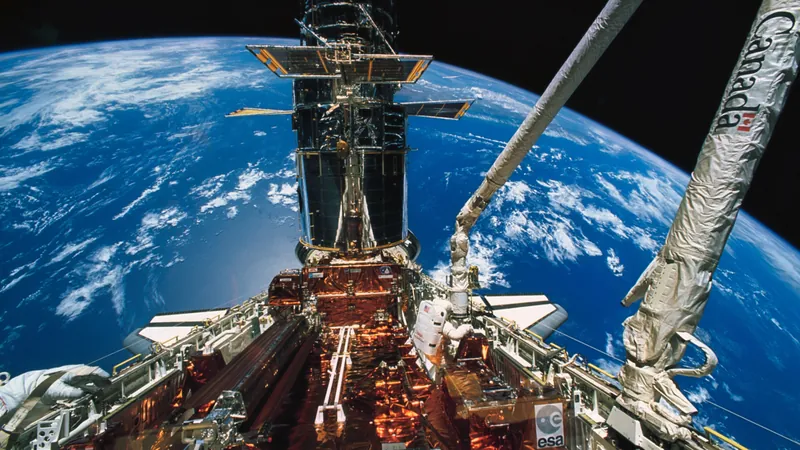
The Hubble Space Telescope: A Journey of Service, Upgrades, and Discovery
2025-04-22
Author: Jia
The Hubble Space Telescope stands as a monumental feat of engineering and human effort. Comparable in size to a large school bus, its contributions to astronomy are immeasurable, generating nearly 250 terabytes of data in over 30 years of operation.
Not only has Hubble delivered breathtaking images from the cosmos, but it also embodies humanity's relentless quest for knowledge. Despite its monumental costs and challenges during its inception, Hubble's legacy continues to inspire.
The Path to Launch
Following the initial discussions for a large space telescope in the late 1960s, it took nearly a decade of advocacy before Congress approved funding for the ambitious project. Named after the renowned astronomer Edwin Hubble, the telescope's launch was delayed multiple times, notably after the tragic Challenger disaster.
Deployment and Initial Challenges
Successfully launched aboard the Space Shuttle Discovery on April 24, 1990, Hubble was soon deployed into orbit. However, the excitement quickly soured when blurry images revealed a serious flaw: a spherical aberration in the primary mirror caused by a minuscule manufacturing error.
Servicing Mission 1: The First Fix
Engineers designed Hubble for serviceability, with features like handrails and modular components for upgrades. During the first servicing mission (STS-61), astronauts took to space for five intense spacewalks, successfully installing corrective optics and upgrading Hubble's tracking capabilities, ultimately restoring its functionality.
Servicing Mission 2: Upgrades and Performance
Mission STS-82 in February 1997 was focused on enhancing Hubble's capabilities with the addition of new instruments, including the Space Telescope Imaging Spectrograph (STIS). This mission saw significant hardware upgrades that improved the telescope's performance.
Servicing Missions 3A & 3B: Extended Upgrades
The pivotal Servicing Missions 3A and 3B in the early 2000s involved an array of lengthy spacewalks where astronauts replaced all six gyroscopes and upgraded critical components, ensuring Hubble's ongoing capability to observe the universe in unprecedented detail.
Servicing Mission 4: A New Era
In 2009, Atlantis embarked on the final servicing mission (SM4), bringing forward cutting-edge instruments like the Cosmic Origins Spectrograph (COS). The astronauts not only replaced key instruments but also repaired others, allowing Hubble to capture some of its most iconic images, including the stunning Hubble Ultra Deep Field.
Hubble Today: Resilience Through Age
Post-2009, Hubble continues to deliver spectacular cosmic views, though aging components pose challenges. Currently operating with two functioning gyroscopes, the telescope has been shifted to conserve one as a backup, showcasing its resilience as it unravels the universe's mysteries despite operational constraints.


 Brasil (PT)
Brasil (PT)
 Canada (EN)
Canada (EN)
 Chile (ES)
Chile (ES)
 Česko (CS)
Česko (CS)
 대한민국 (KO)
대한민국 (KO)
 España (ES)
España (ES)
 France (FR)
France (FR)
 Hong Kong (EN)
Hong Kong (EN)
 Italia (IT)
Italia (IT)
 日本 (JA)
日本 (JA)
 Magyarország (HU)
Magyarország (HU)
 Norge (NO)
Norge (NO)
 Polska (PL)
Polska (PL)
 Schweiz (DE)
Schweiz (DE)
 Singapore (EN)
Singapore (EN)
 Sverige (SV)
Sverige (SV)
 Suomi (FI)
Suomi (FI)
 Türkiye (TR)
Türkiye (TR)
 الإمارات العربية المتحدة (AR)
الإمارات العربية المتحدة (AR)